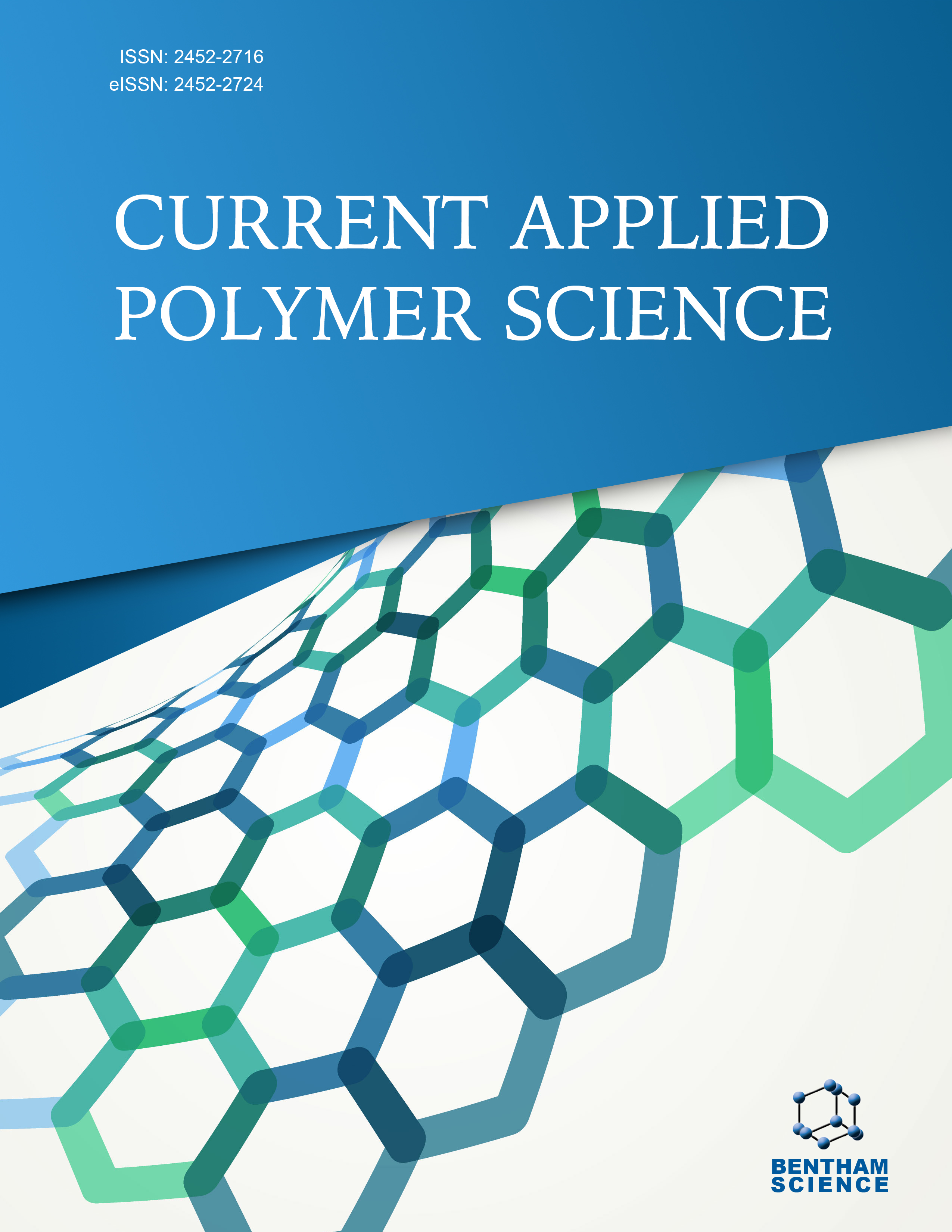- Home
- A-Z Publications
- Current Applied Polymer Science
- Previous Issues
- Volume 5, Issue 2, 2022
Current Applied Polymer Science - Volume 5, Issue 2, 2022
Volume 5, Issue 2, 2022
- Special Thematic Issue Dedicated to Prof. Sabu Thomas - Advances in Polymer Science and Technology
-
-
-
Biomedical Applications of Polysaccharide-Based Aerogels: A Review
More LessAerogels, in recent times, have become materials of extensive research due to their fascinating capabilities in different fields. High porosity, large surface area, low thermal conductivity and low density make them significant in fields such as medicine, environmental engineering, food packaging, and so on. Biodegradability, low toxicity and biocompatibility, in addition to the aforementioned properties, offered by bio-ba Read More
-
-
-
Coir Pith Lignin as a Reliable Bio-Source for Carbonaceous Nano-Structures: Extraction and Characterization
More LessAuthors: Fathima Sherafuddeen, Battula Durga Siva Deeraj, Gejo George and Kuruvilla JosephBackgroundThis paper signifies using coir pith lignin as a cheap and reliable carbon source for preparing bio-based carbonaceous material.ObjectiveThe coir pith is selected as it is abundantly available and has a very high lignin content of 38-59.5%. The soda extraction process does the extraction of lignin from coir pith with a yield of 45%.MethodsThis extracted lignin is then subjected to a different procedure to Read More
-
-
-
Cellulose Nanocrystals (CNCs) Derived from Dyed and Bleached Textile Waste
More LessAuthors: Salvador M. Valencia, Maria-Ximena Ruiz-Caldas, Jing Li and Aji P. MathewBackgroundBio-based nanomaterials such as cellulose nanocrystals (CNCs) have been increasingly explored in nanotechnology owing to their chemophysical properties, self-assembly, and low toxicity.IntroductionCNCs can be isolated from various cellulosic biomass sources. Textiles which are mostly made of cotton, are under-utilized biomass that after their lifetime is either burned or dumped into landfills.MethodsIn this st Read More
-
-
-
Fabrication and Characterization of Carbon Nanofibers Coated Expandable Thermoplastic Microspheres-Based Polymer Composites
More LessAuthors: Wanda Jones, Bedanga Sapkota, Brian Simpson, Tarig A. Hassan, Shaik Jeelani and Vijaya RangariBackgroundThermoplastic expandable microspheres (TEMs) are spherical particles that consist of polymer shell encapsulating a low boiling point liquid hydrocarbon that acts as the blowing agent. When TEMs are heated at 80-190 °C, the polymer shell softens, and the hydrocarbon gasifies, causing the microspheres to expand, leading to an increase in volume and decrease in density. TEMs are used in food packaging, elasto Read More
-
-
-
Eucalyptus Bark Residue Application for Poly(Vinyl Chloride) Composite Production: Influence of Fiber Size and Content
More LessBackgroundBrazil is the world’s largest producer of short fiber cellulose, generating large amounts of eucalyptus bark residue (EBR). Aiming to obtain composites known as wood plastic composites (WPC), the effect of ground EBR addition to a poly(vinyl chloride) (PVC) matrix was studied, considering different granulometries and matrix/load proportions. The influence of fiber content addition and particle size range was an Read More
-
Volumes & issues
Most Read This Month
Article
content/journals/caps
Journal
10
5
false
en


